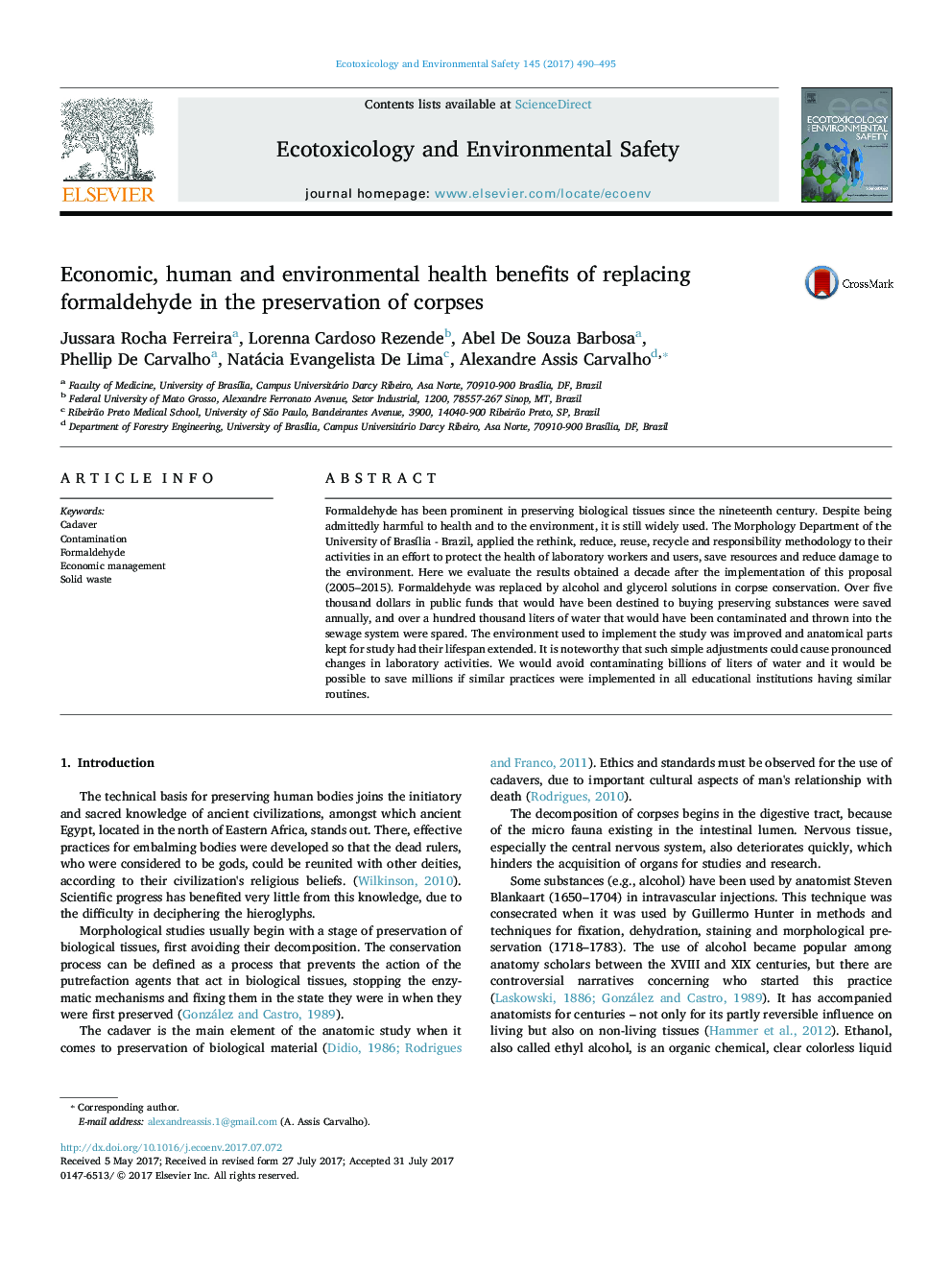| Article ID | Journal | Published Year | Pages | File Type |
|---|---|---|---|---|
| 5747785 | Ecotoxicology and Environmental Safety | 2017 | 6 Pages |
â¢Formaldehyde is widely used despite known harm to human and environmental health.â¢A decade of changes on the technical and scientific activities is reviewed.â¢Replacement of formalin by ethanol and glycerin decreased H2O consumption and costs.â¢Rethinking traditional techniques, and to innovate by simplifying, provides benefits.
Formaldehyde has been prominent in preserving biological tissues since the nineteenth century. Despite being admittedly harmful to health and to the environment, it is still widely used. The Morphology Department of the University of BrasÃlia - Brazil, applied the rethink, reduce, reuse, recycle and responsibility methodology to their activities in an effort to protect the health of laboratory workers and users, save resources and reduce damage to the environment. Here we evaluate the results obtained a decade after the implementation of this proposal (2005-2015). Formaldehyde was replaced by alcohol and glycerol solutions in corpse conservation. Over five thousand dollars in public funds that would have been destined to buying preserving substances were saved annually, and over a hundred thousand liters of water that would have been contaminated and thrown into the sewage system were spared. The environment used to implement the study was improved and anatomical parts kept for study had their lifespan extended. It is noteworthy that such simple adjustments could cause pronounced changes in laboratory activities. We would avoid contaminating billions of liters of water and it would be possible to save millions if similar practices were implemented in all educational institutions having similar routines.
Graphical abstractDownload high-res image (228KB)Download full-size image
